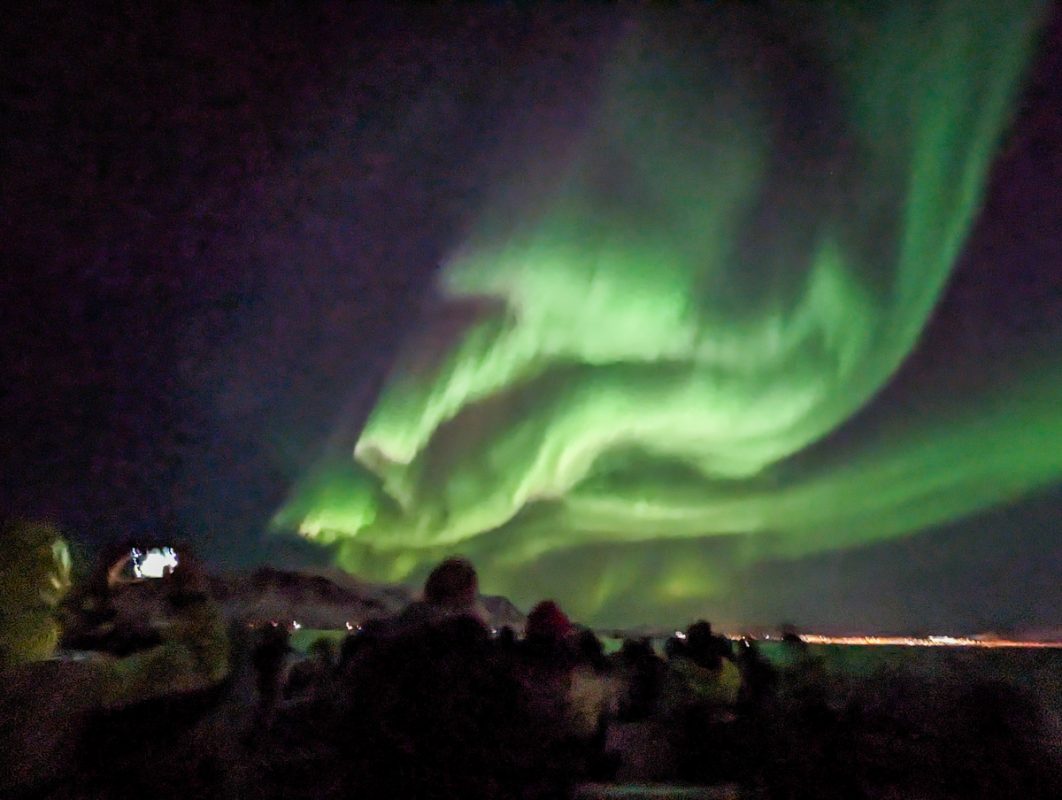Would you like to see the Northern Lights in Iceland in January? Here’s all you need to know!
As our boat bobbed in Reykjavik harbour, I squinted, wondering if I could already make out flashes of green on the dark landscape, or if my eyes were playing tricks on me.
I wrapped my coat tighter around as the boat started sailing forward, away from the Icelandic capital’s light pollution and closer to the beckoning flashes of green on the horizon.
A commentary started, explaining what to do in the event of an emergency and talking about the lights themselves.
“But I’m just going to stop talking now,” said the guide after 10 minutes “as I’m sure none of you are listening, due to what we’re seeing right now”.
The green smudges I’d seen in the harbour were indeed the northern lights, or Aurora Borealis as they are officially called, and above us, the dancing lights were flashing green and pink as they graced the night sky.
Thanks to virtually no cloud cover and freezing conditions, we saw the Northern Lights on our boat trip in January. Here’s everything I’ve learnt about seeing the light during this month, and how you can amplify your chances of spotting them!
This blog post may contain affiliate links.
Can I see the Northern Lights in Iceland in January?
Yes, it’s a popular time to see the northern lights due to the amount of darkness. It gets properly dark for much of the day, so the chances of seeing them is higher. However, seeing them is never guaranteed; they don’t show in overcast conditions.
What are the Aurora Borealis?
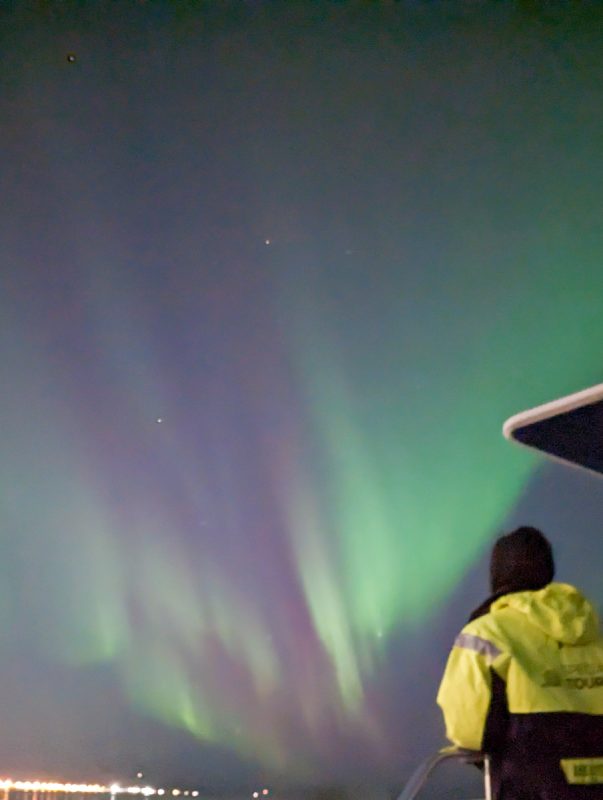
The Aurora Borealis (another word for the northern lights) are a natural phenomenon made up of charged particles of solar wind that hit the earth’s protective atmosphere.
When they hit it, they emit a glowing light that dances and can flicker different colours, depending on the amount of oxygen, nitrogen and other molecules in them. The most common colour is green, but we saw pink (hinting that they had nitrogen molecules) too!
The Aurora Borealis are most visible in the arctic circle because they gravitate towards the poles (there are Southern Lights, also called Aurora Australis, too!).
They’re only visible on dark nights as they contrast with the darkness of the sky around them. This is why they’re most visible during winter.
Along with places in northern Scandanavia, Russia, Northern Canada and Alaska, Iceland is a fantastic northern lights destination!
My experience seeing the Northern Lights on a Reykjavik boat trip
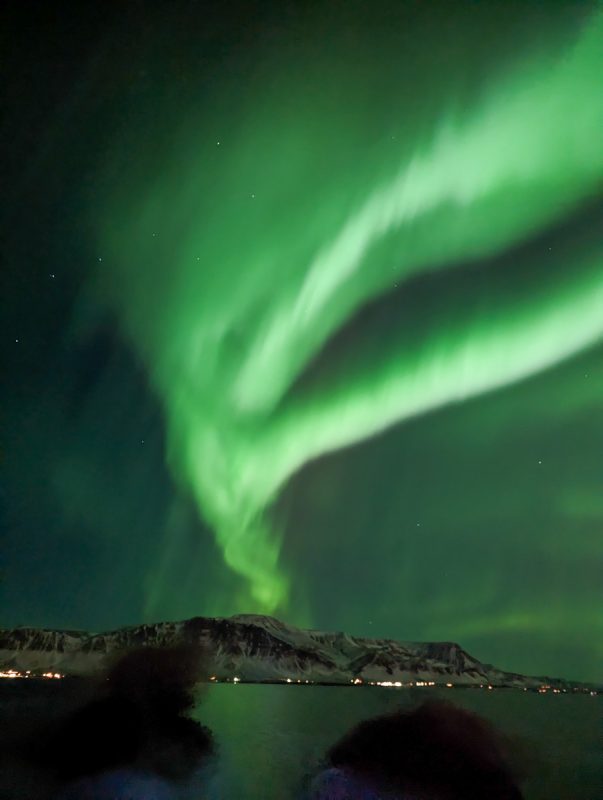
One of the best ways to see the Northern Lights is by boat.
We did this tour which included hotel pick up, two hours on the boat with an experienced guide, the chance to borrow overalls and a bar with purchasable hot drinks, alcohol and waffles.
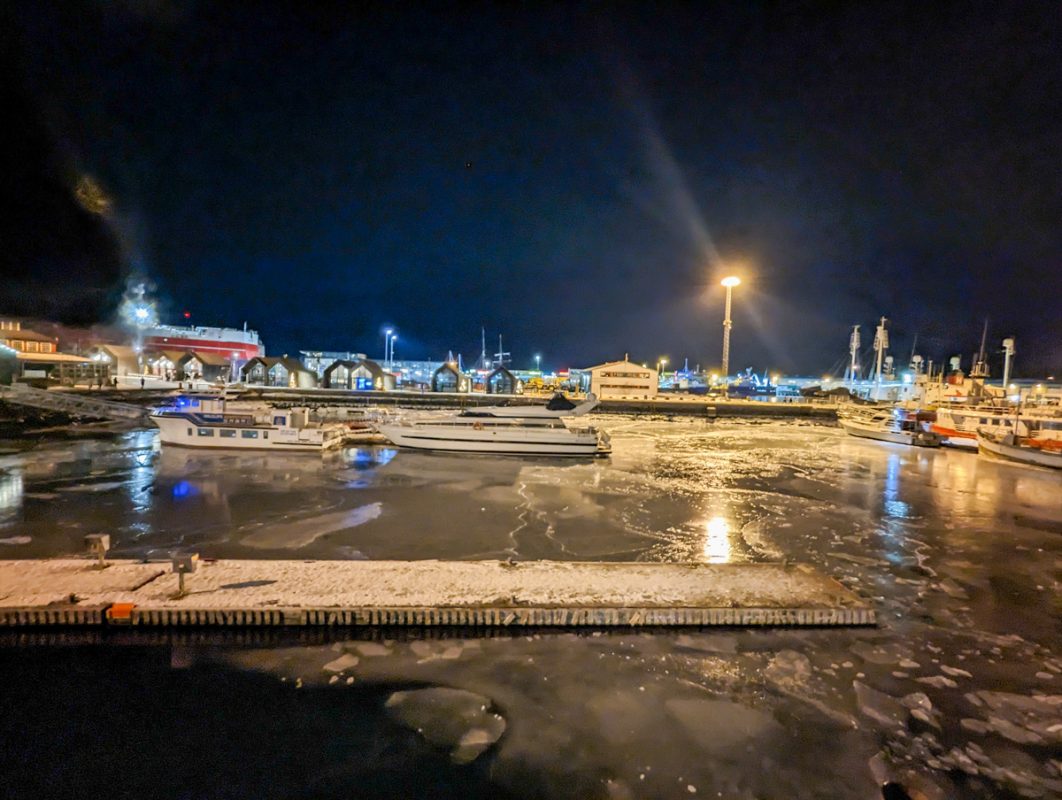
The boat is used for whale watching tours during the day and consisted of two large indoor seating areas, one where the bar is, and an outdoor observation deck. We came and went from the indoor area as we pleased, sipping on hot drinks to keep us warm!
The hot drinks were surprisingly affordable, at around $2 each – we had a hot chocolate each to ensure that we stayed warm.
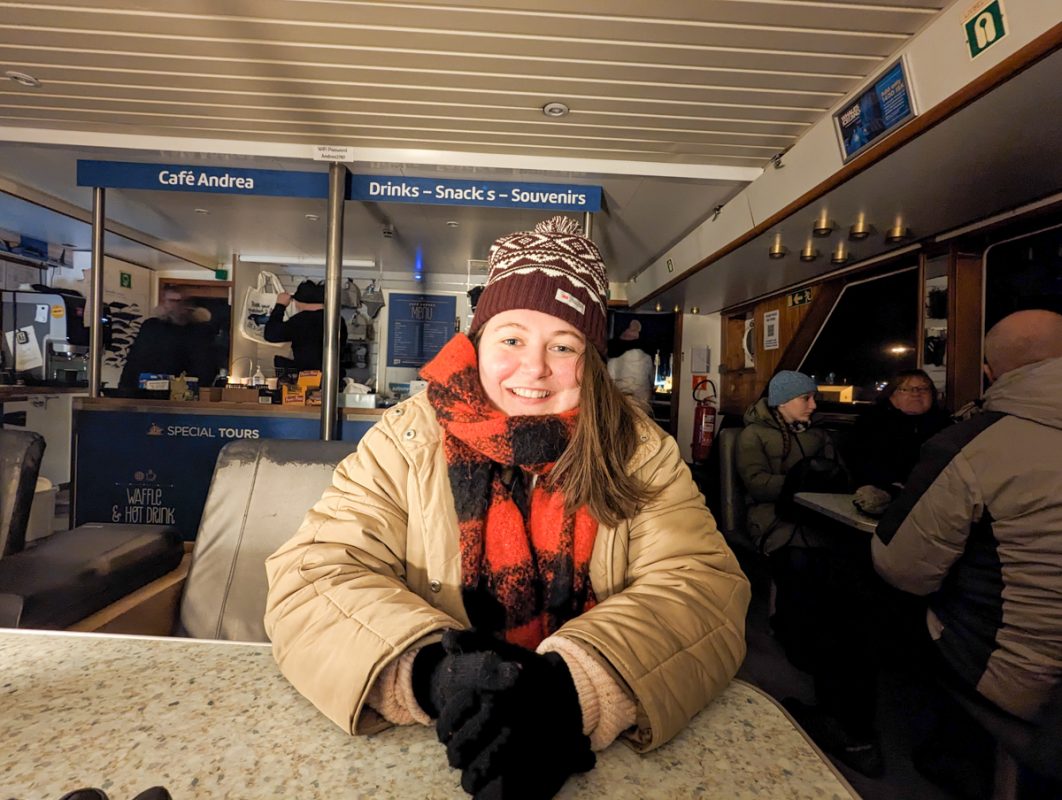
There was one guide on the boat, as well as a team sailing the boat and providing hot drinks. The guide is hooked up with a microphone, and a speaker system ensures that you can always hear him, wherever you are on the boat!
This is handy if you’re having a break inside to warm up and the lights get good again!
We knew we were lucky with a clear night as we sailed away from the harbour and already saw some aurora activity. The guide took us further out to sea, sounding excited himself about the lights that we were seeing, and soon we witnessed them get brighter and brighter.
After taking what felt like hundreds of photos, we went downstairs after an hour or so to warm up; but when the guide mentioned over the tannoy that the lights were getting brighter, we had to go back up!
This was so worth it, as the lights were “dancing” and there were some pinks in the hue.
Eventually, we turned back towards Reykjavik; and as soon as the lights dimmed the boat picked up speed, ensuring we were back in the harbour for 11:00 pm, where vans were waiting to take us back to our hotel.
Tips for taking a Northern Lights tour in January (or anytime in winter!)
Here are my best tips for making the most out of your Iceland Northern Lights tour!
What to wear on the Northern Lights tour
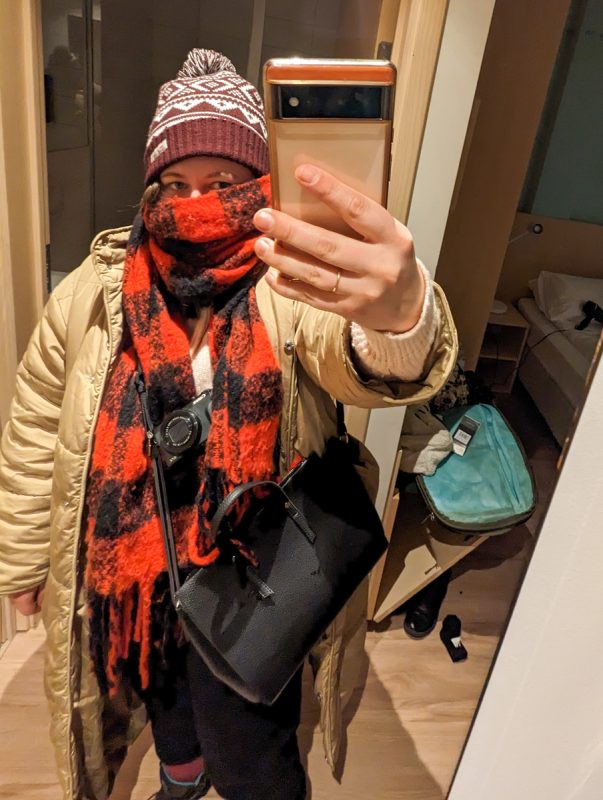
Wear plenty of clothes! You can always take a layer off, you can’t put one back on. I wore three layers on both my top and bottom. Make use of the overalls if you have any concerns about being cold.
There can be strong winds on the boat; so ensure that you wrap up your face with a scarf and wear a hat!
Try to take photos with your gloves on if possible (I had touch-screen-friendly gloves), or make sure that you have regular intervals with gloves on – my fingers got very very cold at one point!
Photography tips for the tour
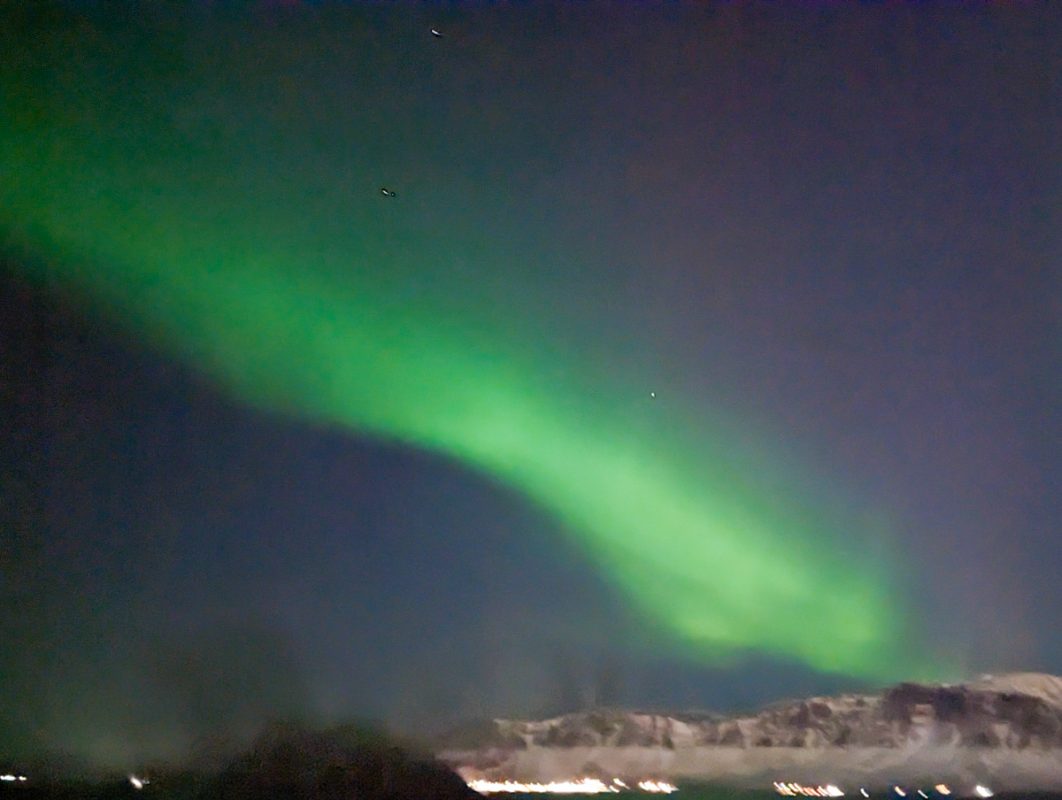
I recommend that you use a phone case where you can hang your smartphone around your neck. You’re on a boat in the middle of the sea after all; there’s a high chance that you could end up dropping it if you aren’t careful!
If you don’t fancy yourself as a professional photographer, there was somebody on board the boat trip that we did who took photos of the Northern Lights for us, which we could download from the Facebook page.
However, for any avid photographers who have an iPhone, you can download the Northern Lights photo taker app which helps you make the most of your phone’s features to take the best shots of the lights! I didn’t try this out personally as I have an Andriod, but it came well recommended from the
Interpreting the weather forecast
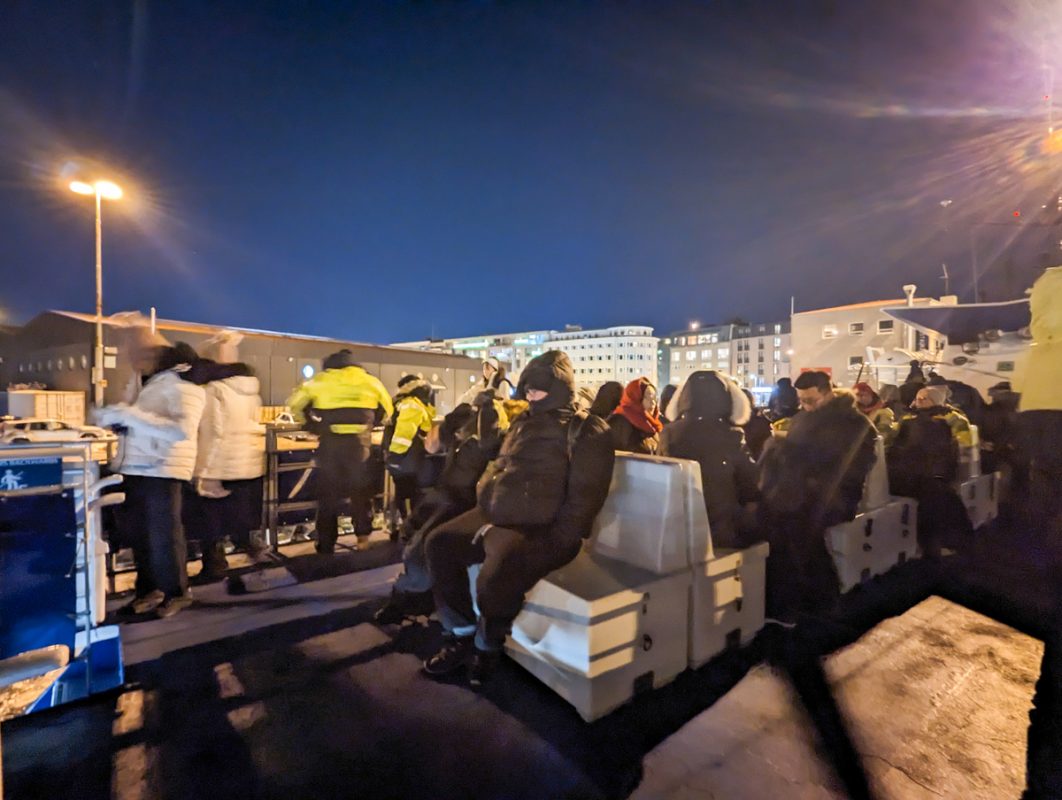
The weather forecast can sometimes tell you that the chance of seeing the lights isn’t good.
They said that for us too, and the expert guide said it was one of the best days he has had this season!
So don’t always listen to the weather forecast. When you book your tour, you’ll probably receive some instructions about contacting the company to see if it’s going ahead on your particular night. Follow these to ensure that you don’t get ready for no reason!
What if you don’t see them?
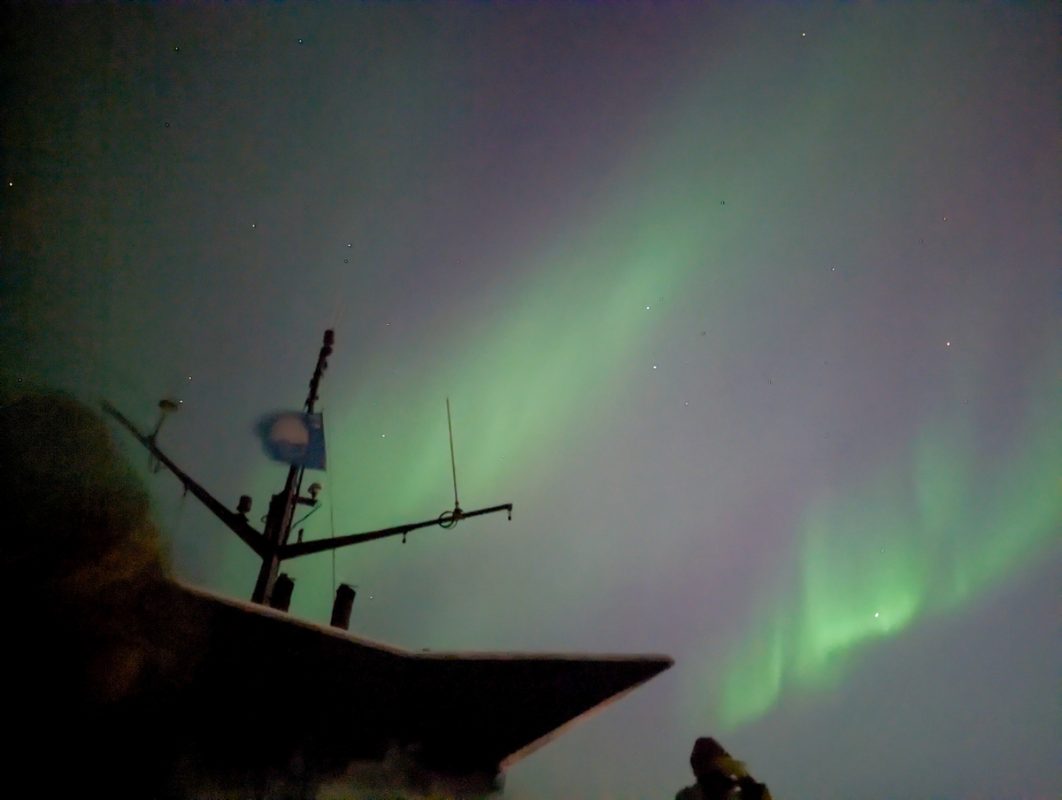
Despite Iceland being in prime location for the Northern Lights in January, there’s absolutely zero guarantees that you’ll see them.
I’d recommend booking your tour as early as possible during your stay in the country, as most companies will offer a complimentary extra tour if you are unable to find them.
This could be the following day if they have space; but it could also be two or three days after.
Many people spend days searching for the Northern Lights, so don’t be disheartened if you don’t see them first time!
Check out the availability and costs of the tour by clicking here.
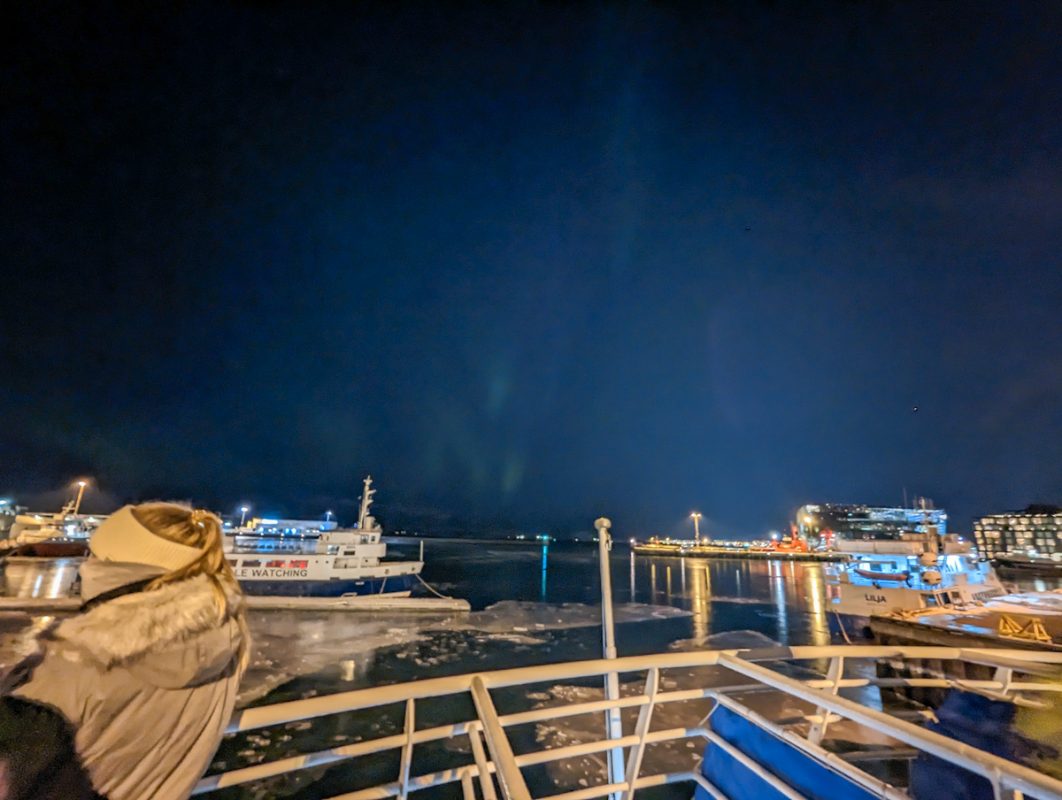
Northern lights tour video
Check out my travel vlog of seeing the Golden Circle and northern lights on one day in Iceland. The northern lights segment is towards the end!
Other ways to see the lights
Northern Lights Bus Tour
This Northern Lights bus tour will depart Reykjavik and drive to wherever the Icelandic meteorologists have predicted that the Aurora Borealis will be strongest on your chosen night.
You’ll take a few stops to see the lights in different places, and your tour admission also includes a complimentary visit to the Aurora Museum in Reykjavik.
The advantage of doing a bus tour is that you can get far away from the city center of Reykjavik and all its bright lights, but a professional can navigate the icy roads so you don’t have to!
Golden Circle and Northern Lights tour
If you’re pushed for time, this tour is a great combo deal that ensures you can see two of Iceland’s winter highlights at once.
This Golden Circle and Northern Lights Tour takes in the highlights of the Golden Circle like Gullfoss Waterfall, Thingvellir National Park and the Great Geysir.
There’s a 3-6 hour break after you finish the Golden Circle tour (giving you time to grab dinner!), before you set out to hunt the Northern Lights.
Here’s my full review of seeing the Golden Circle in the winter.
Seeing them independently
You can certainly see the Northern Lights independently if you know where to look!
Some of the best places to see them include quintessential Icelandic landscapes like the Jokulsarlon glacier lagoon, the black sand beaches of South Iceland, Thingvellir National Park or Siglufjörður in North Iceland which is located only 25 kilometres from the Arctic Circle.
If you want to see the lights independently, keep a beady eye on the road conditions; the roads can be very icy in the cold weather, especially in the nighttime. This is especially important if you’re driving to remote locations.
I’d only recommend driving if you have experience in snowy conditions; if you don’t feel confident, it’s better to be safe and take a tour.
FAQs about the Northern Lights in Iceland
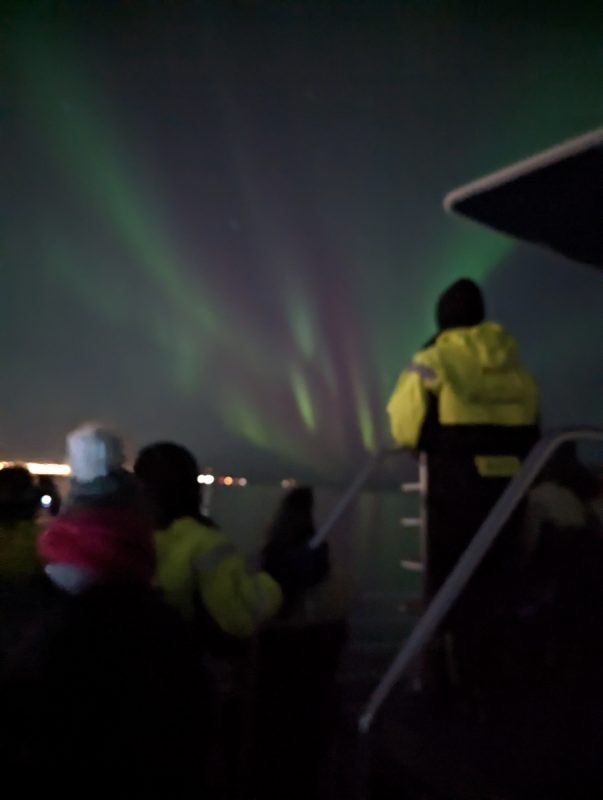
What is the best month to see the Northern Lights in Iceland?
The best months to see the Northern Lights in Iceland is October to March, but the darkest months of November, December and January are when you’re most likely to see them. You’re very unlikely to see them in the summer months.
Is January a good time to see the Northern Lights?
January is a great time to see the Northern Lights due to the amount of darkness. They aren’t usually visible in bad weather, so it’s best to hunt them down on a clear night or book a tour early on in your trip so you can try again if needed.
Is it easy to see Northern Lights in Reykjavik?
Due to the city lights, you can’t usually see the Northern Lights from Reykjavik itself. However, you can easily go on boat or bus tours either into the countryside or out to sea where you can see them much more clearly.
Where is best to see the Northern Lights in January?
One of the best places to see the Northern Lights in January is Iceland, including from the sea near Reykjavik, at Jokulsarlon glacier lagoon in North Iceland villages like Siglufjörður and in Thingveller National Park. You can also see the Northern Lights from north Norway, Finland or Sweden.
Is Iceland or Norway better for Northern Lights?
There’s no guarantee that you’ll see them anywhere, but it’s possible to see the Northern Lights all over Iceland throughout the winter season, whereas in Norway you’ll need to go to the north. However, places like Tromsø are further north than Iceland, possibly enhancing the chance of seeing them.
How much does it cost to go to Iceland to see the Northern Lights?
Northern Lights tours start at around $70 USD per person (although you can see them independently). Return flights to Iceland can cost anywhere from $200 to $500 from the US, and around £100 – £300 from the UK. You’ll also need to pay for accommodation and food!
How often are the Northern Lights visible in Iceland?
As all of Iceland is in Northern Lights territory, you can catch a glimpse of them for 7 to 8 months of the year (September to April), although the darkest months of November, December and January are prime time to see them.
What are the chances of seeing the Northern Lights in Iceland?
It largely depends on when you go and what the weather conditions are like, but in general the chances of seeing the Northern Lights in Iceland in winter are quite high, especially if you go to places with no light pollution.
Where is the best place in Iceland to see the Northern Lights?
Thingvellir National Park is often thought of as the best place to see the northern lights, partially due to its accessibility from Reykjavik – it’s about an hour’s drive away on a well-maintained road. However, anywhere with little light pollution also works!
Can you see Northern Lights in Iceland in February?
February is one of the best months to see the northern lights in Iceland, as daylight hours are still short – however, as it’s lighter than December and January, your chances of seeing them are slightly lowered compared to the other winter months.
Can you see the northern lights in Iceland in December?
December is the darkest month in Iceland, with the sun setting as early as 3:00 pm and not rising until past 11:00 am, which means that you’re most likely to see the northern lights during this month during good weather conditions.
So, are the northern lights good in Iceland in January?
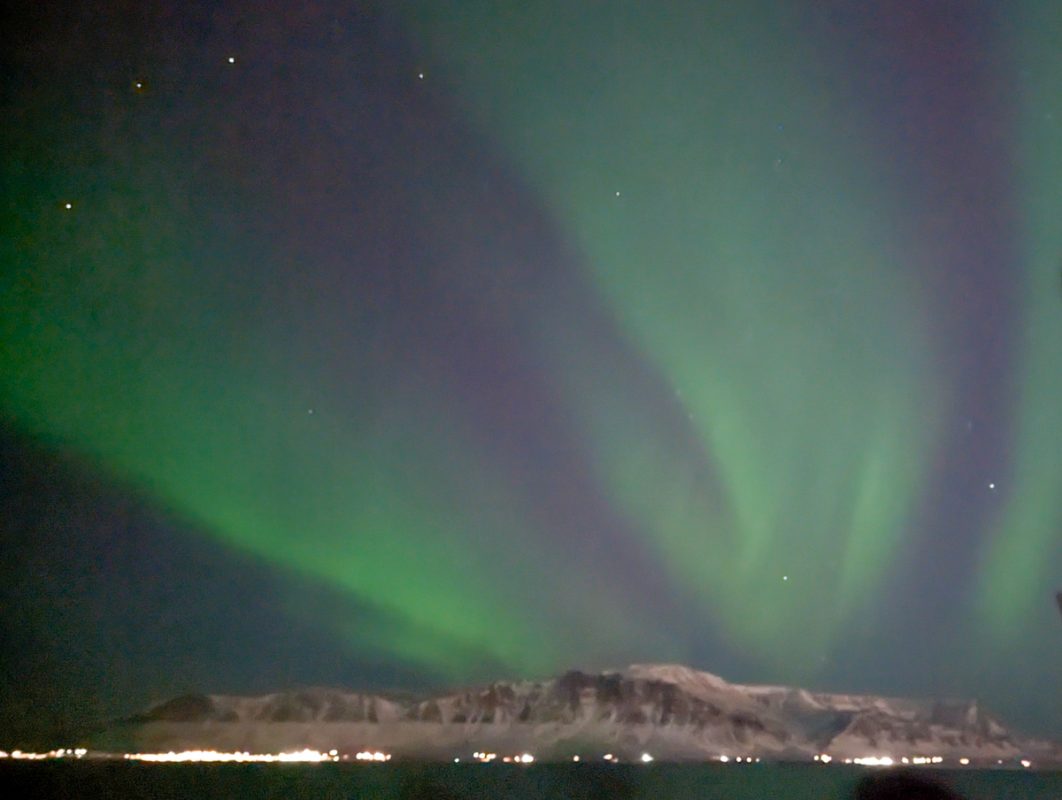
Thanks to its minimal hours of daylight and northern location, Iceland is a popular destination to see the Northern Lights, one of the world’s greatest natural wonders.
Hopefully, this guide has helped you to spot them and make the most out of northern light hunting on your trip!
If you’re visiting Iceland in winter, check out the rest of my travel guides!

